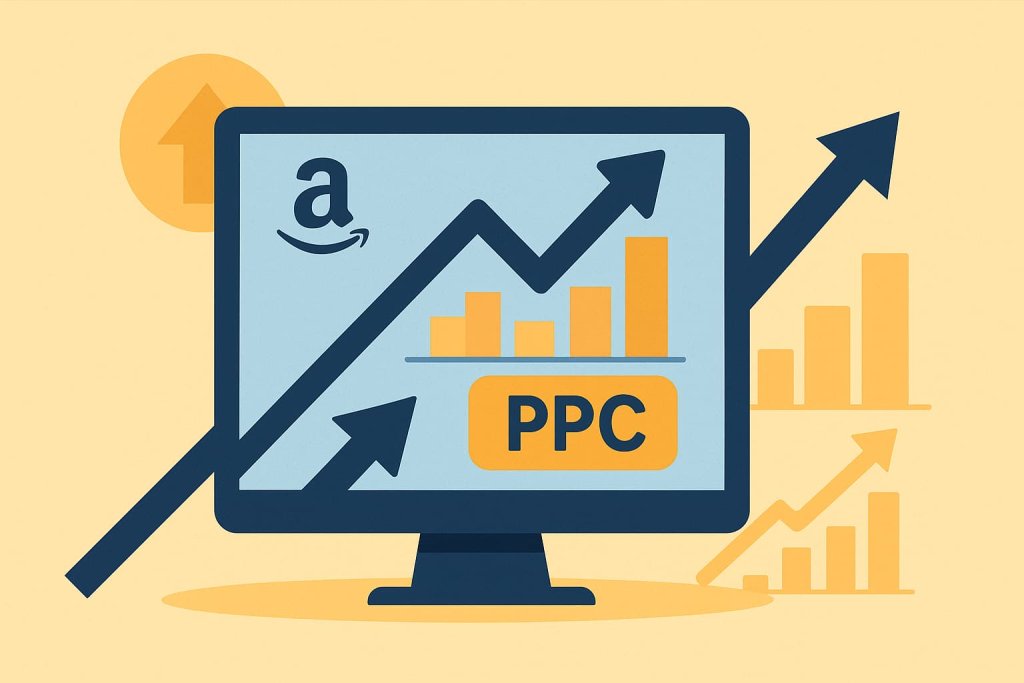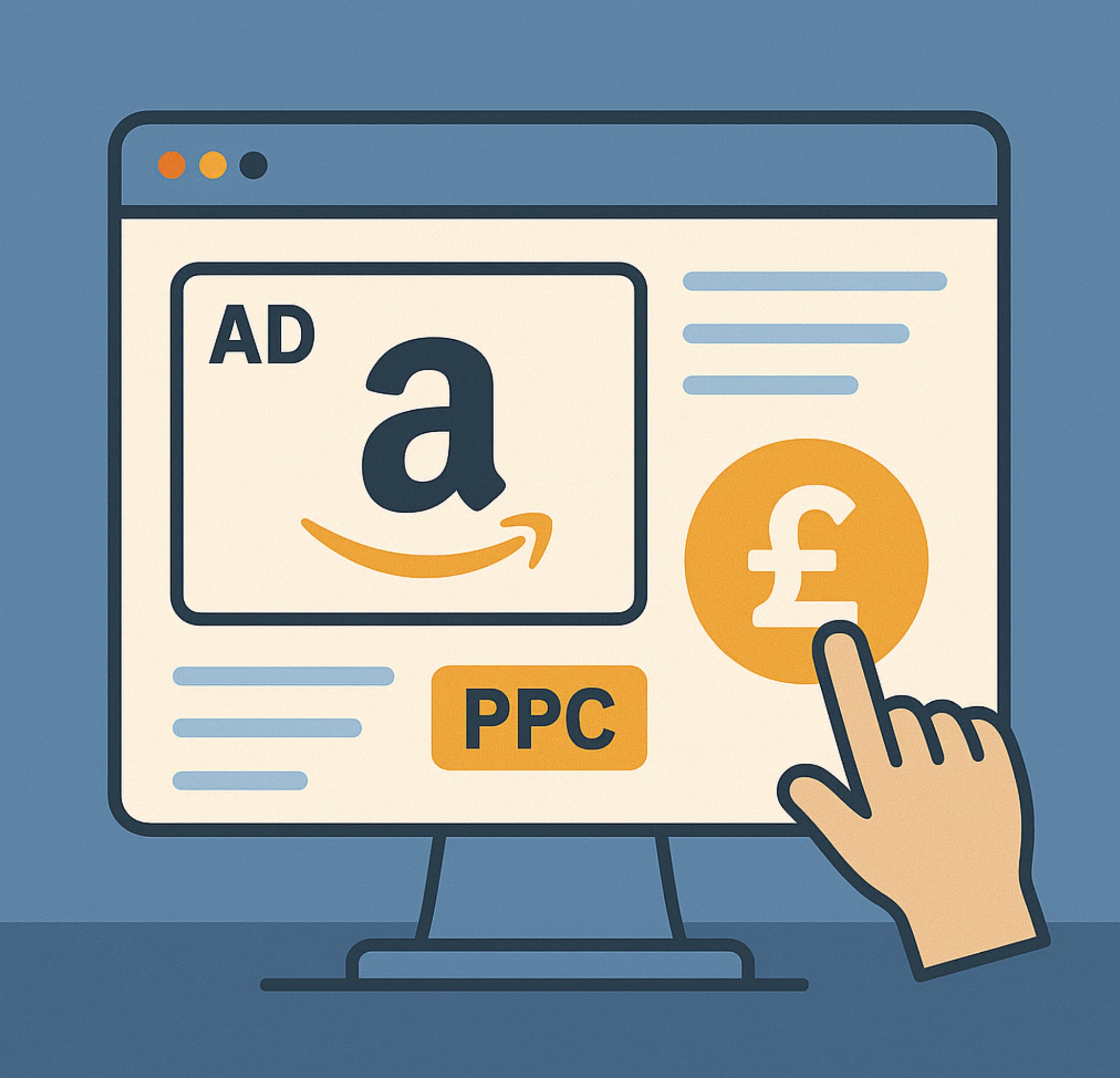A Beginner’s Guide to Amazon PPC
30 April 2025A brand-new listing, however well crafted, must still jostle with thousands of rivals for the shopper’s attention. Amazon Pay-Per-Click advertising closes that visibility gap, placing your offer in front of ready-to-buy customers while organic rank gathers pace. Yet the first visit to Campaign Manager can feel like stepping into the cockpit of a freight plane: levers, toggles and dials everywhere, each promising lift or disaster. This guide introduces the essentials, wrapping technical detail in plain English so you can launch your first campaigns without burning through budget.
Why PPC matters

Early sales velocity is the lifeblood of Amazon’s ranking engine. Ads generate those first conversions, which in turn attract reviews, which then bolster organic placement. A virtuous loop begins: paid impressions feed trust signals, trust signals reduce reliance on paid impressions. For a fledgling seller, PPC is less an optional add-on and more an ignition switch that sparks the growth flywheel.
Meet the three ad formats
Sponsored Products is the everyday workhorse, blending seamlessly with organic results while targeting specific keywords or rival ASINs. Sponsored Brands, a banner with logo and headline, positions your range as a destination – ideal for sellers with multiple complementary SKUs. Sponsored Display adds a retargeting layer, following shoppers across Amazon and, increasingly, the wider web. Visualise these formats as concentric circles of influence: Products capture intent already in motion, Brands shape discovery, Display reignites interest when attention drifts elsewhere.
Laying a clean campaign foundation
Structure is half the battle. Begin with one automatic campaign per product, allowing Amazon’s algorithm to gather data on relevant search terms. After a week or two, filter the search-term report for phrases that drove conversions and migrate them into manual campaigns. In those manual sets, assign a single high-value keyword to each ad group and pair it with one match type – broad, phrase or exact. Mirroring this rhythm across every product keeps reporting crystal clear, so you can see at a glance which lever deserves a tweak.
Targeting that earns its keep
Keyword choice should start with the language you used while optimising the listing, then stretch into synonymous or adjacent phrases that capture broader demand. Relevancy remains king: “wireless headphones” serves Bluetooth earbuds, whereas “gaming headset” does not – unless the product truly fits the gamer brief. Alongside keywords, target competitive ASINs that sit in your price bracket and share core features, inserting your advert on their detail pages where shoppers naturally compare. Review search-term reports fortnightly, promoting new winners to exact match and excluding phrases that soak up spend without yielding sales.
Reading early performance signals
When data trickles in, resist the urge to tinker hourly. Impressions reveal whether bids are entering auctions; a healthy click-through rate confirms your creative resonates. Cost per click explains the competitive temperature of a search term, while unit session percentage – Amazon’s label for conversion rate – tells you how persuasively the listing closes the deal. Advertised Cost of Sale binds it all together. If ACOS climbs yet reviews and rank stand still, budgets are leaking. If ACOS falls while organic traffic rises, the flywheel is catching.
Scaling without overspending
Patience trumps bravado. Lift daily budgets by five to ten per cent once ACOS sits comfortably below your profitability threshold, then inch bids upwards on proven keywords in ten-pence steps. Test new match types only after exact campaigns perform consistently, and quarantine experimental formats such as Sponsored Display behind ring-fenced budgets. Rapid doubling of spend seldom ends well – algorithms need breathing room to stabilise, and each dramatic pivot restarts their learning cycle.
Avoiding the common traps
Several pitfalls can undo weeks of careful optimisation. Overlapping campaigns that bid on the same keyword compete against themselves, inflating costs. Sudden price drops or listing edits made without pausing ads can torpedo conversion and skew performance metrics. Stock-outs cut revenue and, because the ads keep running unless paused, burn through spend on items no longer available. Treat PPC management as a sequence of controlled trials: change one variable, observe, iterate.
When expert guidance becomes the next lever
Handled thoughtfully, Amazon PPC morphs from a nervous expense into a disciplined growth engine. Ads drive sales, sales earn social proof, social proof lifts rank, and higher rank reduces the cost of every future click. Still, daily bid adjustments, keyword mining and performance audits demand both time and expertise.
If you would rather focus on product innovation while specialists fine-tune campaigns, Ascend’s Amazon account-management team is ready to help. Book a complimentary strategy call today and discover how our data-led approach turns every click into profitable growth – without the guesswork.
